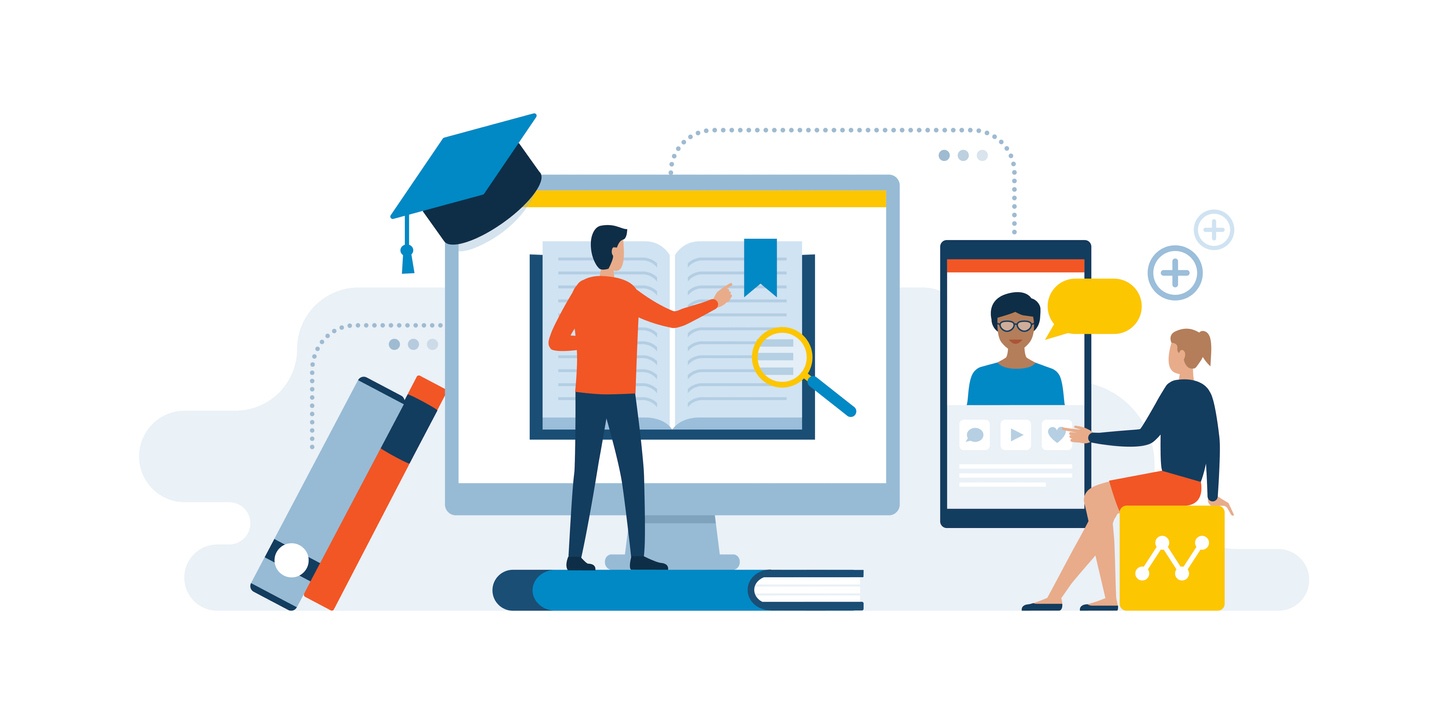TEACH Act Provides Distance Learning Flexibility

With the outbreak of the novel coronavirus, the United States, along with the rest of world, finds itself in uncharted territory with regard to almost every aspect of daily life. While our lives have been turned upside down, we strive to continue to do the things that make us human: learn, teach, create, invent, work, relax, grow, and forge ahead. Despite the suspension of in-person classes by most schools and institutes of higher learning, continuing education is paramount. And while many educators are feeling overwhelmed with the sudden shift to online classes, it’s essential to understand that U.S. copyright law allows for flexible distance learning options.
Back in 2002, congressional drafters of the Technology, Education, and Copyright Harmonization (TEACH) Act recognized that the future of education would increasingly involve online classes and the use of digital materials, and they sought to enact provisions that would ensure that teachers and students could recreate in-classroom learning over the internet without running afoul of copyright law. Academic institutions, publishers, libraries and other stakeholders joined Congress in its effort, and they worked together to produce a roadmap for educators that would allow teachers and students to access scholarly and creative works in a way that respects the rights of copyright owners and creators.
Codified in 17 U.S.C. ¤ 110(2) and 112(f), the TEACH Act addresses the unique copyright issues surrounding remote online learning by allowing for the performance and display of copyrighted materials for distance education by accredited, non-profit educational institutions (including primary K-12 schools, colleges, and post graduate institutions) and government bodies when certain conditions are met. Ultimately, it’s important to understand that the TEACH Act ensures that educators can conduct online classes using the same materials they would during a face-to-face class session while requiring a few safeguard provisions to protect against violations of copyright owners’ exclusive rights.
While educators and copyright owners seeking more detail should refer directly to sections 110(2) and 112(f) of the copyright act, the following bullet points highlight the principal takeaways:
- Works typically displayed in an in-person classroom can be used for remote learning so long as the performance or display is made by or under the supervision of an instructor and would regularly be used in face-to-face instructional activities.
- Transmissions of materials must be restricted to enrolled students or officers/employees of governmental bodies as part of their official employment duties.
- Institutions must provide informational materials to faculty, staff, and students that accurately describe and promote compliance with US copyright laws and provide notice to students that materials used with a course are protected.
- In the case of digital transmissions, institutions must ensure that the students cannot retain the copyrighted material for longer than the class session and cannot further disseminate the material.
- Institutions may convert analog versions of work to digital so long as no digital work is available to the institution. They can also convert it even when they have a digital version if there are technological protection measures associated with their digital copy that would prevent its use under the TEACH Act.
It must also be noted that the TEACH Act does not protect performances or displays based on copies that were unlawfully made or acquired or copies primarily produced or marketed for performance or display as part of mediated instructional activities transmitted via digital networks.
As David Welkowitz, an attorney in the Office of the General Counsel of the U.S. Copyright Office and former copyright professor, explains in a recent article, “copyright law actually has tools specifically intended for distance learning.” And with the provisions of the TEACH Act in place for nearly twenty years, accredited educational institutions and government bodies are extremely familiar with the above requirements and well positioned to now apply them to their expanded distance learning curriculum.
But at this difficult time, it’s also crucial for educators to recognize the vast amount of educational resources that are already available and accessible to all (see here, here, and here). While the current scale of distance learning is unprecedented, free resources and tools have been in place for years to supplement online education programs.
Many organizations are also now offering free access to online tutorials and educational materials (including some directly targeted to distance learning), and these resources can be used to augment regular scheduled lessons. Additionally, the need for credible information and educational material has led many publishers and news organizations to drop previously existing paywalls from their websites. With access to these resources and an understanding of the copyright laws that facilitate remote learning, educational activities and respect for creators and copyright owners in the U.S. and beyond will endure.

